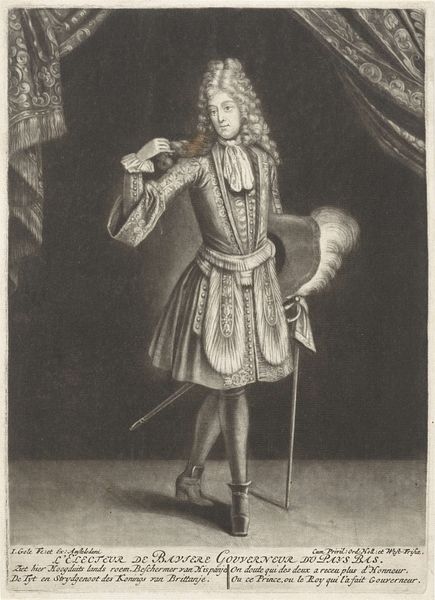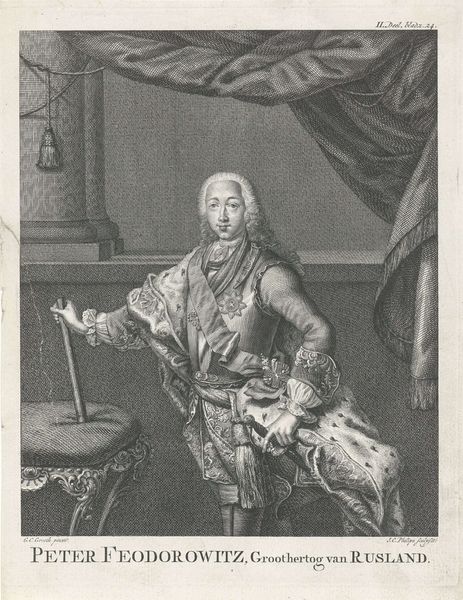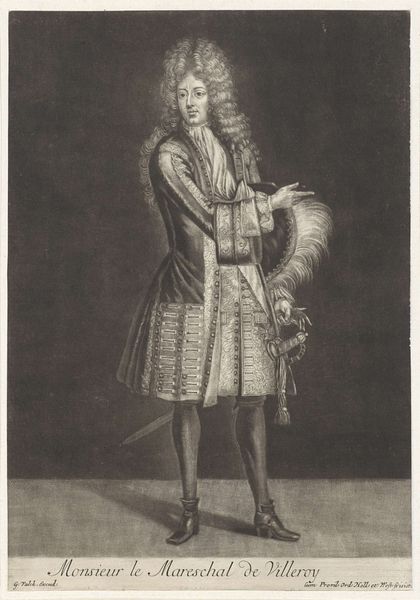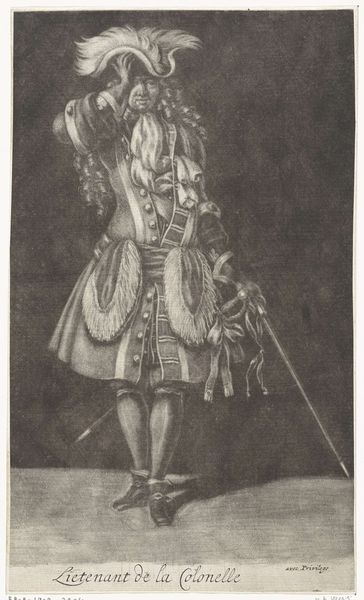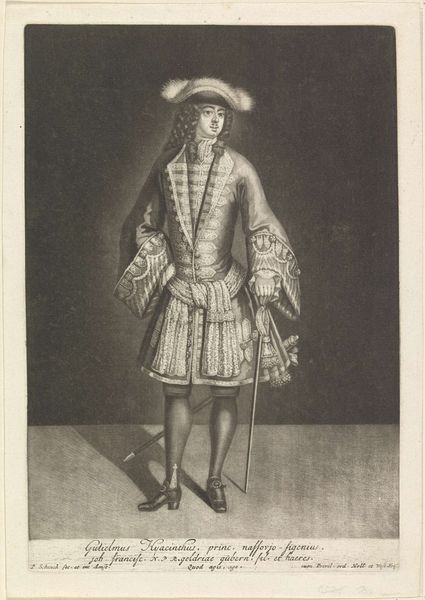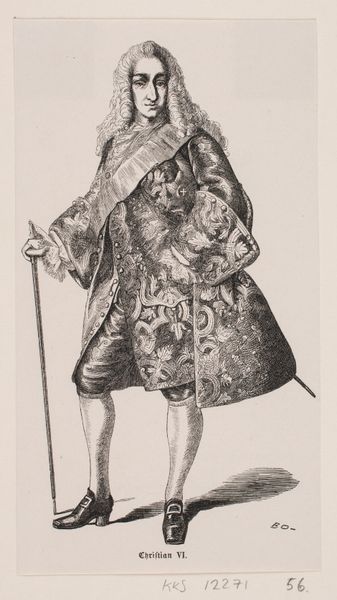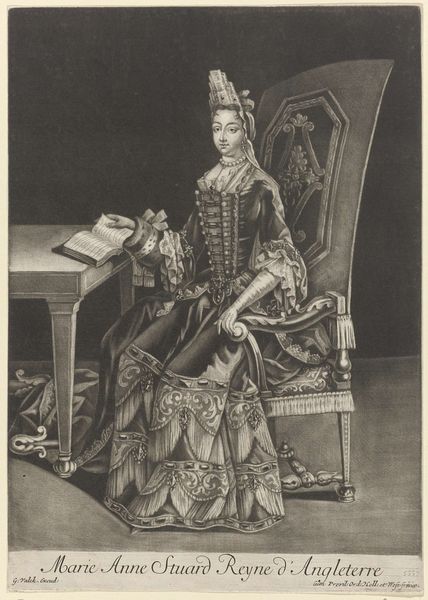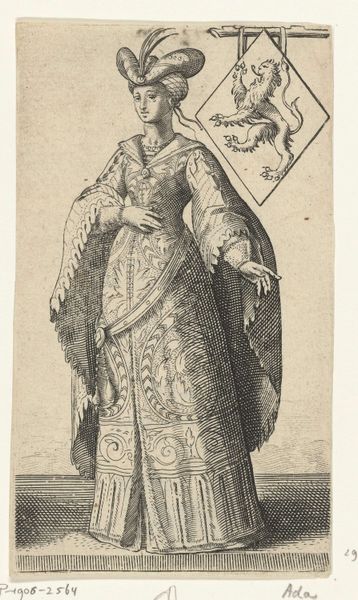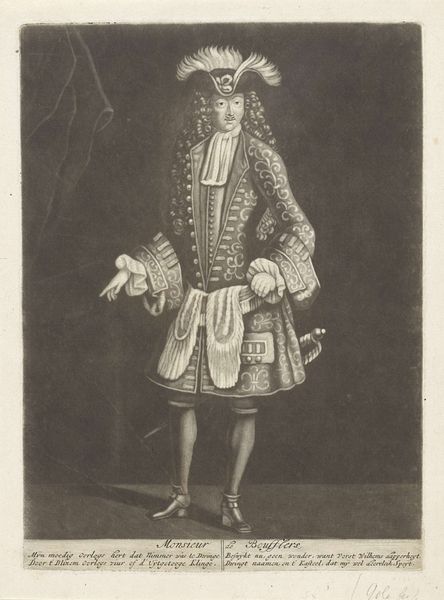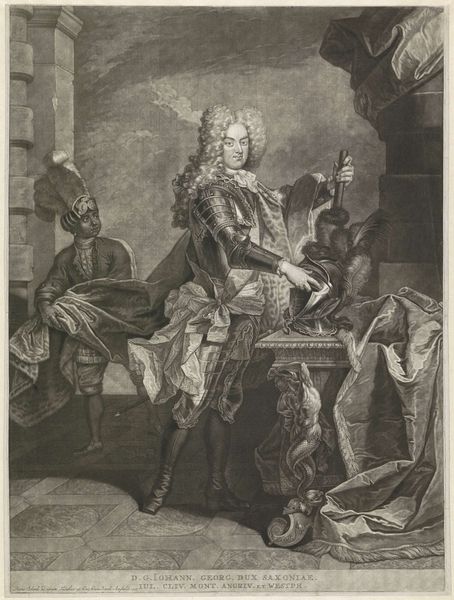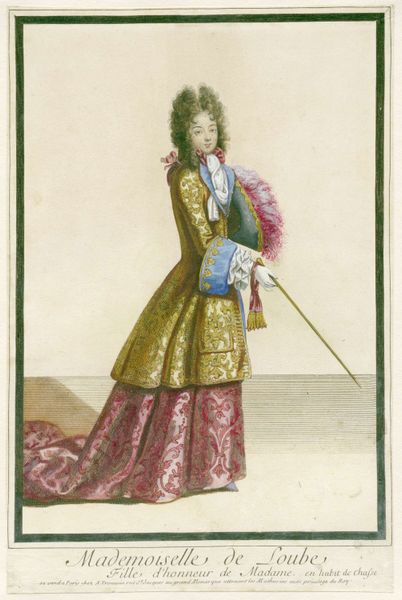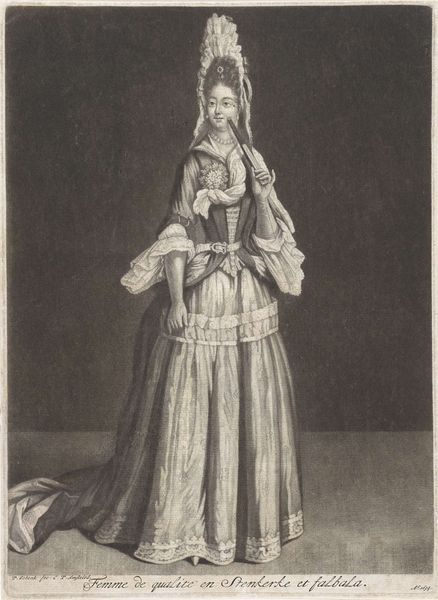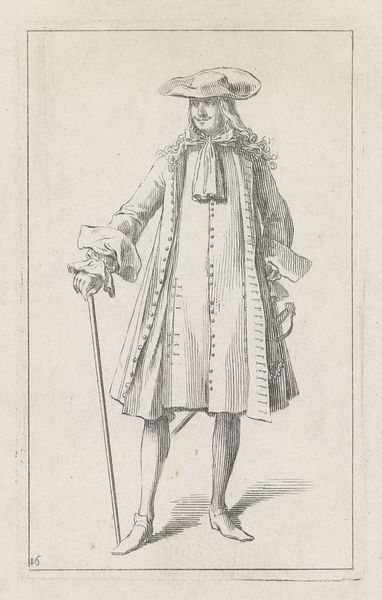
print, engraving
#
portrait
#
baroque
# print
#
history-painting
#
engraving
Dimensions: height 255 mm, width 175 mm
Copyright: Rijks Museum: Open Domain
Pieter Schenk made this portrait of Johann Adolph II van Saksen-Weissenfels, likely sometime between 1660 and 1711, using a printmaking technique. Look closely, and you’ll see that the finely detailed lines create a range of tones, giving shape to the figure and his elaborate clothing. This wasn't just drawing; it was a labor-intensive, skilled process. The engraver used a tool to cut lines into a metal plate, which was then inked and printed. The density and depth of the lines determine the darkness of the printed image. Consider the social context: printmaking made images more widely available, yet the meticulous work still signified value. This portrait reflects the status of the sitter, Johann Adolph, through the artistry and time required to produce it. The very act of creating such a detailed print elevates the subject. Thinking about the material and process helps us understand the cultural importance of images like this one, and how they blurred the lines between craft, art, and social status.
Comments
No comments
Be the first to comment and join the conversation on the ultimate creative platform.
